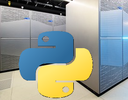Model tutorials
Browse through model-specific tutorials. Many of the models in the natESM system have their own dedicated guides. We've compiled the most important tutorials for core components here for easy access.
ICON-A Tutorial by DWDThe ICON tutorial can be used as an introduction to working with the ICON model and also as a reference work for users. The manuscript can be used as a textbook, similar to a user manual for the ICON model. Readers are assumed to have a basic knowledge of the design and usage of numerical |
|||
YAC Tutorial 2022 by DKRZA presentation about YAC with included tutorial for coupling, parallel interpolation and data exchange and YAC GUI available. |
 |
||
ComIn User Guide by DWDThe Community Interface (ComIn) organizes the data exchange and simulation events between the ICON model and "3rd party modules". |
|||
FESOM Tutorial by AWIThis document describes several ways of getting started with FESOM2. It is shown with a minimum set of comands that will lead to a working setup on systems where FESOM2 is used activelly. |
 |
Teaching materials
DKRZ Tech Talk: Gitlab Workflows by DKRZVideo tutorial: Wilton Loch (natESM RSE), Pradipta Samanta (DKRZ) and Georgiana Mania (DKRZ) present on Git and GitLab Workflows. Extended slides available. |
|||
Semantic Versioning by Tom Preston WernerSemantic Versioning: Under this scheme, version numbers and the way they change convey meaning about the underlying code and what has been modified from one version to the next. The bigger your system grows and the more packages you integrate into your software, the more likely you are to find yourself, one day, in this pit of despair. As a solution to this problem, it is proposed a simple set of rules and requirements that dictate how version numbers are assigned and incremented. |
 |
||
PlaSim - PlanetSimulator by University of HamburgA climate model of intermediate complexity for Earth, Mars and other planets. It can be used for training the next GCM developers, to support scientists to understand climate processes, and to do fundamental research. The system is scalable with regard to vertical and horizontal resolutions, provides experiment dependent model configurations, and it has a transparent and rich documented code. |
|||
LEVANTE HPC - Documentation for Users: Software and Services by DKRZUseful information how to start your work with DKRZ-HPC Levante: Configuration, SSH, Environment, File Systems, SLURM, Data processing and transfer, known issues and file system. |
 |
||
Python on Levante - a User written tutorial by users of DKRZThis is a tutorial from a user’s perspective. It shows how to code in python on Levante. This tutorial focuses specifically on Python. The tutorial recommends VS Code as a tool for coding. However, with the exception of the first section, the tips apply to other coding-tools as well. |
|||
GEMS: Your Gateway to Climate & Validation DataWorking with Intake and Intake-ESM, CDOs, Vizualization with ParaView and DASK for performant dataflows. Hints, tips and tricks from easyGEMS project. EMS is a powerful web interface and software suite developed by WarmWorld in collaboration with DKRZ. It provides a user-friendly way to search, access, and analyse climate and observational data stored at DKRZ: CMIP6, CORDEX, Reanalysis like ERA5, NEXTGEMS, MPI-GE, DYAMOND, EERIE, etc. |
 |
||
Video: CESM tutorial recordings by NCAR/UCARClimate and Global Dynamics Laboratory (CGD) is part of the NSF National Center for Atmospheric Research (NCAR). On their channel they upload lots of recordings e.g. CESM Workshops and tutorials, WCRP workshop, CGD seminar series. |
|||
UCAR COMET by UCARFree collection of hundreds of training resources intended for the geoscience community. Over 240,000 hours of online education each year in disciplines such as aviation weather, climate, convective weather, emergency management, hydrology, numerical modeling, satellite meteorology and winter weather, among many others. |
|||
Volc2Clim by BGSFrom volcanic sulfur emissions to climate forcing and response.Volc2Clim enables the user to calculate volcanic radiative forcing and the global climate response to an explosive volcanic eruption.The user needs to enter key eruption source parameters, such as the mass or height of SO₂ injected, and can also set model parameters. |
|||
Conventional CommitsA specification for adding human and machine readable meaning to commit messages. The Conventional Commits specification is a lightweight convention on top of commit messages. It provides an easy set of rules for creating an explicit commit history; which makes it easier to write automated tools on top of. This convention dovetails with SemVer, by describing the features, fixes, and breaking changes made in commit messages. |
 |
||
pre-commit: Framework for managing and maintaining multi-language pre-commit hooksYou specify a list of hooks you want and pre-commit manages the installation and execution of any hook written in any language before every commit. pre-commit is specifically designed to not require root access. If one of your developers doesn’t have node installed but modifies a JavaScript file, pre-commit automatically handles downloading and building node to run eslint without root. |
More learning opportunites:
|
|
DWD numerical model training by DWDThe aim of the course is to familiarize new users with the nonhydrostatic numerical weather prediction modelling framework ICON. The course is directed towards experienced scientists. The theoretical part of the training is common for all three courses. However, the respective practical exercises focus on different topics. |
|
NCAR/UCAR annual workshop on CESM by NCARUpcoming and past workshops: a week long workshop to showcase research, experiments, and more that feature CESM |
||
NFDI4Earth Academy ProgramNFDI4Earth addresses digital needs of Earth System Sciences. Earth System scientists cooperate in international and interdisciplinary networks. NFDI4Earth is a community-driven process providing researchers with FAIR, coherent, and open access to all relevant Earth System data, to innovative research data management and data science methods. |
||
Summer Schools in EuropeVarious summer schools ranging from human geography, natural sciences and computer science to environmental studies. |
 |
Information and courses on evaluation and validation
ESMValTool Tutorial: Software for evaluating Earth System Model simulationsThe Earth System Model Evaluation Tool (ESMValTool) is a community developed software toolkit that aims to facilitate the diagnosis and evaluation of the causes and effects of model biases and inter-model spread within the CMIP model ensemble. |
||
XCES tool: ClimXtreme Central Evaluation System by DKRZThe analysis tools to be developed by the individual subprojects as well as the data needed to investigate these questions will be collected into a common software toolbox. This will facilitate the test applications, the data access and to collect the results. |
You can find a lot more interesting and further training courses on our events page ! Also check out our learning pages for advanced levels.









